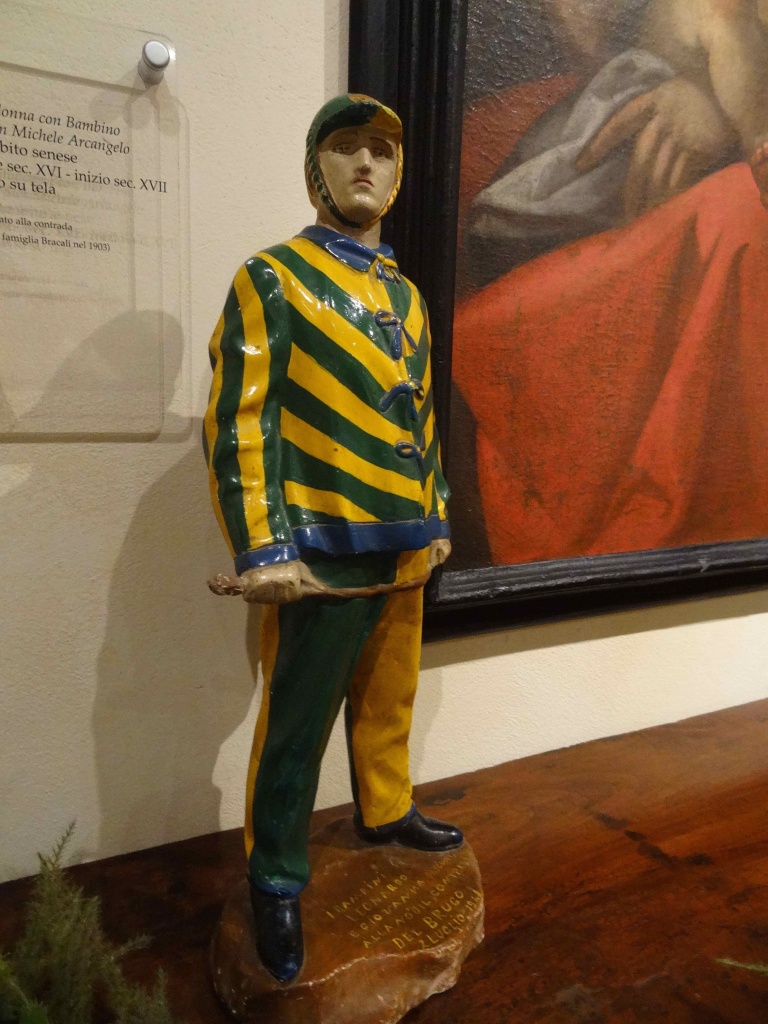Sixty thousand people gather at Piazza del Campo in Siena to watch a 90-second horse race around the square. Crowds cheer, jockeys maneuver the narrow curves of San Martino and struggle to stay on their steed. Children, as well as adults, root for their jockeys as they go through emotions of joy, frustration, and anger, all in a minute and a half. The stakes are high: The winner receives the Drappellone, a one-of-a kind hand-painted silk banner specifically made for the race, and the bragging rights to parade throughout the city for at least three months.
If you find yourself in Siena during Palio di Siena (or simply just Il Palio), you have to understand that it’s not just a horse race… It is a cultural event that is a year-round obsession for the people of the Tuscan city.
Held twice each year — on July 2 (Palio di Provenzano) in honor of the Madonna of Provenzano, namesake of the famous church in Siena, and on August 16 (Palio dell’Assunta), in honor of the Assumption of Mary — the Palio di Siena is a Medieval action-packed event that dates all the way back to 1644.
Both races feature ten horses with riders, bareback and dressed in full regalia, representing ten of the seventeen contrade, or city wards, throughout Siena. Established in the Middle Ages for military reasons, a contrada was originally nothing more than a few streets but it became a strong symbol of identification among the locals.
Members of a contrada share a strong bond and regularly come together to celebrate important events including baptisms, deaths, marriages, church holidays, and food festivals. Even today, inter-contrade marriages means that husbands, wives, and their children celebrate special occasions with their respective birth districts, as one can only be born into a contrada.
Each contrada is named after an animal or symbol and has a long history as well as a complicated set of heraldic and semi-mythological associations. While visitors are usually not allowed into their private community centers, I got a chance to visit the Bruco (Caterpillar) Contrada to get a sneak peek at how they prepare for the palio… Which, as one former Bruco jockey told me with great pride, the Bruco Contrada has won 37 times.
Horses that are chosen to run the palio are picked by a lottery system, while jockeys are hired by each contrada based on their expressed desire to win at any cost. Horses are blessed inside the church of the campus, as everyone prays to win against their rivals. A horse can still win the race without a rider. The members of the contrada raise millions of Euros to cover the expenses of designing the expensive costumes, training horses, hiring jockeys, and throwing endless parties.
Tips for Traveling to Siena during Il Palio:
- Arrive in Siena at least four days before the scheduled race, so you can participate in pre-race events. Visitors can watch the selection of horses, trial races, and attend open-air dinners hosted by each contrada. Stay at a hotel in Siena’s Centro Storico so you can walk to all activities.
- At the day of the race, plan to find your spot five hours in advance for free standing room. Seats, windows and balconies can be booked in advance for €160 to upwards of €350 per seat through travel agents and event planners.
- It is important to pick an allegiance with a specific contrada (it is a race after all), and hang out with your adoptive contradaioli.
- Plan to stay for the post-race costume procession and, hopefully, party with your winning team!
Is there a sporting festival you would travel across the world for? If so, we want to hear from you! Share details in the comment section below.



